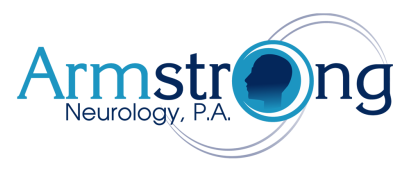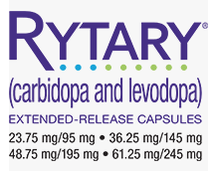Parkinson Disease
Parkinson disease is a fairly common disorder that presents with a variety of symptoms. Many patients are familiar with the classical resting tremor and unsteady gait. However, there are a number of other features associated with this disorder.The symptoms of Parkinson disease can be divided into several broad categories:
Primary Motor Symptoms
Secondary Motor Symptoms
Non motor Symptoms
Primary Movement or “Motor” Symptoms
- Resting Tremor: In the early stages of the disease, about 70 percent of people experience a slight tremor in the hand or foot on one side of the body, or less commonly in the jaw or face. A typical onset is tremor in one finger. The tremor consists of a shaking or oscillating movement, and usually appears when a person's muscles are relaxed, or at rest, hence the term "resting tremor." The affected body part trembles when it is not performing an action. Typically, the fingers or hand will tremble when folded in the lap, or when the arm is held loosely at the side, i.e., when the limb is at rest. The tremor usually ceases when a person begins an action. Some people with PD have noticed that they can stop a hand tremor by keeping the hand in motion or in a flexed grip. The tremor of PD can be exacerbated by stress or excitement, sometimes attracting unwanted notice. The tremor often spreads to the other side of the body as the disease progresses, but usually remains most apparent on the initially affected side. Although tremor is the most noticeable outward sign of the disease, not all people with PD will develop tremor.
- Bradykinesia: Bradykinesia means “slow movement.” A defining feature of Parkinson’s, bradykinesia also describes a general reduction of spontaneous movement, which can give the appearance of abnormal stillness and a decrease in facial expressivity. Bradykinesia causes difficulty with repetitive movements, such as finger tapping. Due to bradykinesia, a person with Parkinson’s may have difficulty performing everyday functions,such as buttoning a shirt, cutting food or brushing his or her teeth. People who experience bradykinesia may walk with short, shuffling steps. The reduction in movement and the limited range of movement caused by bradykinesia can affect a person’s speech, which may become quieter and less distinct as Parkinson’s progresses.
- Rigidity: Rigidity causes stiffness and inflexibility of the limbs, neck and trunk. Muscles normally stretch when they move, and then relax when they are at rest. In Parkinson’s rigidity, the muscle tone of an affected limb is always stiff and does not relax, sometimes contributing to a decreased range of motion. People with PD most commonly experience tightness of the neck, shoulder and leg. A person with rigidity and bradykinesia tends to not swing his or her arms when walking. Rigidity can be uncomfortable or even painful.
- Postural Instability: One of the most important signs of Parkinson’s is postural instability, a tendency to be unstable when standing upright. A person with posturalinstability has lost some of the reflexes needed for maintaining an upright posture, and may topple backwards if jostled even slightly. Some develop a dangerous tendency to sway backwards when rising from a chair, standing or turning. This problem is called retropulsion and may result in a backwards fall. People with balance problems may have particular difficulty when pivoting or making turns or quick movements. Doctors test postural stability by using the “pull test.” During this test, the neurologist gives a moderately forceful backwards tug on the standing individual and observes how well the person recovers. The normal response is a quick backwards step to prevent a fall; but many people with Parkinson’s are unable to recover, and would tumble backwards if the neurologist were not right there to catch him or her.
Secondary Motor Symptoms:
In addition to the cardinal signs of Parkinson’s, there are many other motor symptoms associated with the disease.
- Freezing: Freezing of gait is an important sign of PD that is not explained by rigidity or bradykinesia. People who experience freezing will normally hesitate before stepping forward. They feel as if their feet are glued to the floor. Often, freezing is temporary, and a person can enter a normal stride once he or she gets past the first step. Freezing can occur in very specific situations, such as when starting to walk, when pivoting, when crossing a threshold or doorway, and when approaching a chair. For reasons unknown, freezing rarely happens on stairs. Various types of cues, such as an exaggerated first step, can help with freezing. Some individuals have severe freezing, in which they simply cannot take a step. Freezing is a potentially serious problem in Parkinson’s disease, as it may increase a person’s risk of falling forward.
- Micrographia: This term is the name for a shrinkage in handwriting that progresses the more a person with Parkinson’s writes. This occurs as a result of bradykinesia, which causes difficulty with repetitive actions. Drooling and excess saliva result from reduced swallowing movements.
- Mask-like Expression: This expression, found in Parkinson’s, meaning a person’s face may appear less expressive than usual, can occur because of decreased unconscious facial movements. The flexed posture of PD may result from a combination of rigidity and bradykinesia.
- Unwanted Accelerations: It is worth noting that some people with Parkinson’s experience movements that are too quick, not too slow. These unwanted accelerations are especially troublesome in speech and movement. People with excessively fast speech, tachyphemia, produce a rapid stammering that is hard to understand. Those who experience festination, an uncontrollable acceleration in gait, may be at increased risk for falls.
Additional secondary motor symptoms include those below, but not all people with Parkinson’s will experience all of these.
- Stooped posture, a tendency to lean forward
- Dystonia
- Impaired fine motor dexterity and motor coordination
- Impaired gross motor coordination
- Poverty of movement (decreased arm swing)
- Akathisia
- Speech problems, such as softness of voice or slurred speech caused by lack of muscle control
- Difficulty swallowing
- Sexual dysfunction
- Cramping
- Drooling
Non-motor Symptoms Most people with Parkinson’s experience non-motor symptoms, those that do not involve movement, coordination, physical tasks or mobility. While a person’s family and friends may not be able to see them, these “invisible” symptoms can actually be more troublesome for some people than the motor impairments of PD.
Early Symptoms
Many researchers believe that non-motor symptoms may precede motor symptoms — and a Parkinson’s diagnosis — by years. The most recognizable early symptoms include:
- loss of sense of smell, constipation
- REM behavior disorder (a sleep disorder)
- mood disorders
- orthostatic hypotension (low blood pressure when standing up).
Other Non motor Symptoms
Some of these important and distressing symptoms include:
- sleep disturbances
- constipation
- bladder problems
- sexual problems
- excessive saliva
- weight loss or gain
- vision and dental problems
- fatigue and loss of energy.
- depression
- fear and anxiety
- skin problems
- cognitive issues, such as memory difficulties, slowed thinking, confusion and in some cases, dementia
- medication side effects, such as impulsive behaviors
Preparing for your visit:
During your visit your neurologist will inquire and document many aspects of your care. Certain topics that will very likely be covered include:
1. Review of medications including any that may potentially exacerbate your symptoms.
2. Documentation of any additional or new symptoms: difficulty with memory, frequent falls, autonomic symptoms.
3. Discuss any issues with depression, anxiety, apathy, impulse control issues, hallucinations, and implement a plan of action for such symptoms.
4. Discuss any difficulties with sleep such as; fragmentation, restless legs, acting out of dreams (REM sleep behavior disorder), daytime sleepiness, and plan for appropriate therapy.
5. Sometimes the medications for Parkinson disease can cause abnormal movements or even have a wearing-off effect. Your neurologist will discuss these issues and provide suggestions for improvements.
________________________________________________________
________________________________________________________
Parkinson disease videos:
|
|
|
______________________________________________________________________
In addition to medical therapy, there are devices to help patients perform actives of daily living.
______________________________________________________________________
Lee Silverman Voice Treatment
LSVT Global, Inc. pioneered the Lee Silverman Voice Treatment (LSVT®), an innovative and clinically-proven method for improving voice and speech in individuals with Parkinson disease.
Today, LSVT Global specializes in the development of innovative and effective treatments for the speech communication (LSVT LOUD™) and physical/occupational therapy (LSVT BIG™) needs of individuals with Parkinson disease as well as aging and other conditions including stroke, multiple sclerosis, cerebral palsy, and Down syndrome. Our mission is to provide unlimited access to proven treatments for all who can benefit.
______________________________________________________________________
______________________________________________________________________
Disorders that share similarities with Parkinson Disease:
|
Lewy body dementia
Lewy Body Dementia (also called Dementia with Lewy bodies) is a form of dementia that shares characteristics with both Alzheimer's and Parkinson's diseases. Lewy Body dementia (LBD) symptoms resemble other diseases but LBD is especially challenging to diagnose correctly. As a caregiver, you may feel discouraged in the face of this dementia, however, you can make the life of someone with LBD safer and more comfortable. By more fully understanding LBD and by using strategies that help you can also bring more hope and purpose into your own life. |
|
|
Multiple system atrophy
Multiple system atrophy (MSA) is a neurodegenerative disease marked by a combination of symptoms affecting movement, blood pressure, and other body functions; hence the label "multiple system" atrophy. The cause of MSA is unknown. Various Forms of MSA Symptoms of MSA vary in distribution, onset and severity from person to person. Because of this, three different diseases were initially described to encompass this range of symptoms: Shy-Drager syndrome, striatonigral degeneration, and olivopontocerebellar atrophy. In Shy-Drager syndrome, the most prominent symptoms are those involving the autonomic system, the body system that regulates blood pressure, urinary function, and other functions not involving conscious control. Striatonigral degeneration causes parkinsonian symptoms such as slowed movements and rigidity, while olivopontocerebellar atrophy principally affects balance, coordination, and speech. These diseases are now considered forms of MSA. |
|
|
Progressive supranuclear palsy
Progressive supranuclear palsy (PSP) is a rare brain disorder that causes serious and progressive problems with control of gait and balance, along with complex eye movement and thinking problems. One of the classic signs of the disease is an inability to aim the eyes properly, which occurs because of lesions in the area of the brain that coordinates eye movements. Some individuals describe this effect as a blurring. Affected individuals often show alterations of mood and behavior, including depression and apathy as well as progressive mild dementia. The disorder's long name indicates that the disease begins slowly and continues to get worse (progressive), and causes weakness (palsy) by damaging certain parts of the brain above pea-sized structures called nuclei that control eye movements (supranuclear). PSP was first described as a distinct disorder in 1964, when three scientists published a paper that distinguished the condition from Parkinson's disease. It is sometimes referred to as Steele-Richardson-Olszewski syndrome, reflecting the combined names of the scientists who defined the disorder. Although PSP gets progressively worse, no one dies from PSP itself. |
|
______________________________________________________
Rem sleep behavior disorder is an abnormality of sleep that can be seen in patients with many of the conditions listed above.
|
REM sleep behavior disorder
REM sleep behavior disorder is a sleep disorder in which you appear to physically act out vivid, often unpleasant dreams with abnormal vocal sounds and movements during rapid eye movement (REM) sleep. You normally don't move during REM sleep, a normal stage of sleep that occurs many times during the night. You may have other sleep disorders with REM sleep behavior disorder. REM sleep behavior disorder often may be associated with other neurological conditions, including Lewy body dementia, Parkinson's disease and multiple system atrophy. |
|
______________________________________________________













